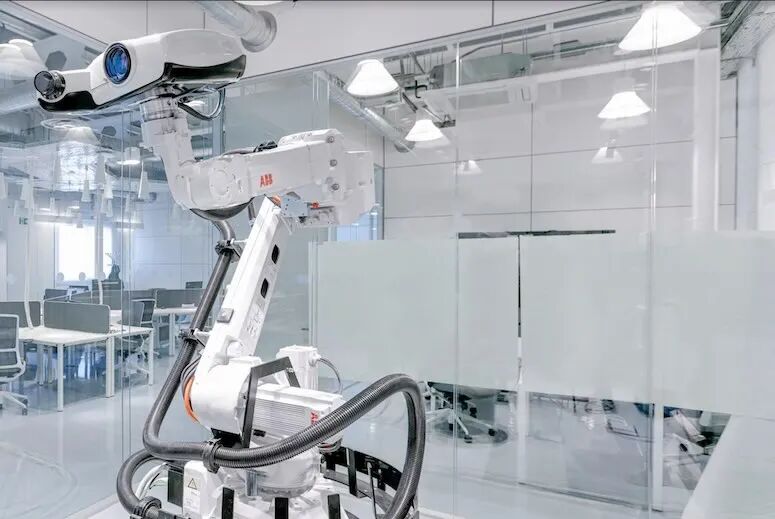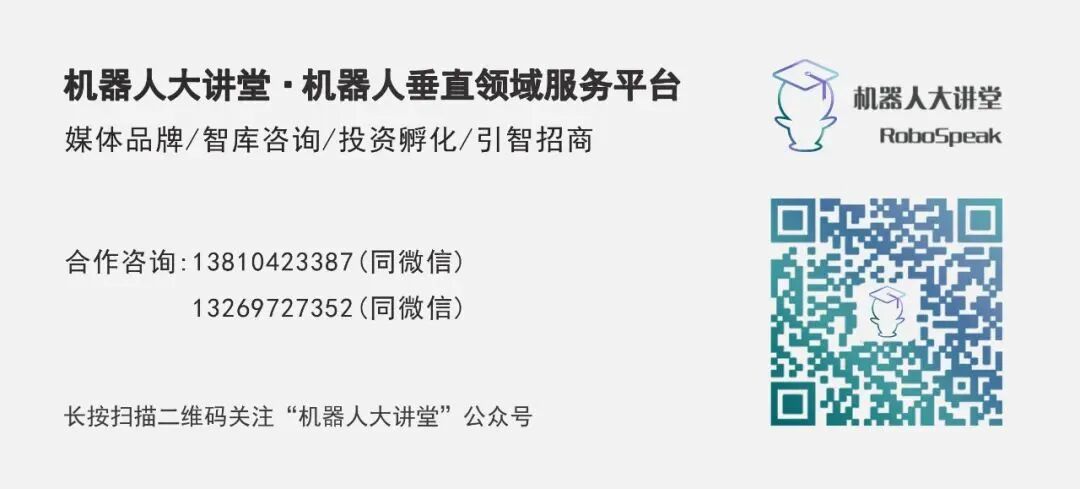The wave of artificial intelligence is evolving at an unprecedented speed, profoundly changing many industries, with the robotics industry being at the forefront. Among them, industrial robots are accelerating towards autonomy, intelligence, and collaboration. ABB’s history is an epic filled with innovation and progress. Its robot story began in 1974, the year it launched the “world’s first commercially available all-electric robot,” the IRB 6. In 2024, 50 years later, they will celebrate the 50th anniversary of their robot chapter. To commemorate this milestone, ABB Robotics President Marc Segura recently highlighted three major trends regarding ABB’s view on AI-driven robot innovation. Learning from others, ABB Robotics is increasingly integrating artificial intelligence into its automation and electrification product portfolio for sectors such as power, industry, transportation, and infrastructure. According to public information, ABB has launched over 100 artificial intelligence projects focusing on applications such as insight generation, process optimization, skill development, and human-machine interaction, balancing both analytical AI and generative AI. ABB’s four major business areas—electrification, motion control, process automation, and robotics and discrete automation—have all applied artificial intelligence. ▍AI Will Enhance the Autonomy of Robot ApplicationsThe advancement of AI is expanding the boundaries of industrial robot applications. AI enhances various capabilities of robots, including grasping, recognition, and movement. Whether mobile robots or collaborative robots, with the support of AI, they possess unprecedented operating speed, accuracy, and load capacity, enabling them to undertake more tasks in more complex dynamic environments such as factories and warehouses. Segura stated: “AI-enabled mobile robots can transform industries such as manufacturing, logistics, and laboratories. For example, robots equipped with ABB’s newly developed Visual SLAM (Visual Synchronization, Localization, and Mapping) technology have advanced environmental perception and autonomous navigation capabilities, significantly reducing reliance on additional infrastructure, facilitating the shift from fixed production lines to dynamic networks, improving efficiency, and allowing workers to focus on more valuable tasks by taking on more repetitive and tedious work.” The following video is sourced from ABB Robotics. ▍AI Will Drive Robots into More New IndustriesThe potential of AI-enabled robots is also beginning to impact fields beyond manufacturing. By 2024, these technologies are expected to significantly enhance efficiency in dynamic environments such as healthcare and retail. The construction industry is another example, where AI-driven robots can greatly improve productivity, safety, and sustainability, driving industry growth. Segura pointed out: “The construction industry well demonstrates the innovative potential of AI robots, as they can address issues such as labor shortages, safety, and low productivity in the sector. The cognitive and decision-making capabilities brought by AI, combined with advancements in collaborative robots, can enable safe collaboration with workers. These advancements also allow robots to perform tasks such as bricklaying and assembly more accurately and quickly, and achieve more sustainable construction by reducing on-site concrete mixing, thereby minimizing the environmental impact of construction.”▍AI Will Bring More Possibilities for Robot Education and ApplicationsThe advancements in AI and robotics technology also have profound implications for training and education, narrowing the automation skills gap and making it easier for more users to utilize robots. With the assistance of AI, programming through methods such as teaching has become simpler, allowing education to focus more on how to enhance human-machine collaboration efficiency rather than just teaching programming skills. This will lower the threshold for using robots, attract more users, create new employment opportunities, and help alleviate labor and skills shortages. Segura believes: “The long-standing shortage of talent in programming and supporting robots has constrained the promotion of robot applications, and the progress of AI is changing this situation. With technologies such as natural language programming, users can control robots through voice commands, further promoting the development of human-machine interaction.” It is evident that, in ABB’s view, AI technology is profoundly shaping and driving the further development of robots, bringing new possibilities for their application in more fields. While continuing to promote technological innovation in AI-enabled robots, they are also actively applying these new technologies in practical scenarios, driving the transformation and upgrading of the traditional robotics industry.▍AI Empowering Industrial RobotsFor a long time, the pain points of industrial robots include insufficient autonomy, concentration of applications in manufacturing, high usage thresholds, limited intelligence levels, poor human-machine interaction, low system integration, harsh application environments, and limited mobility. Low autonomy not only increases the difficulty of use but also restricts their widespread application in new fields. With AI empowerment, autonomy becomes possible, and mobile robots are rising from the role of automatic transport to “mobile workstations”, bringing new opportunities for establishing flexible working modes. In the past, industrial robots were mainly used in large-scale standardized manufacturing, especially on automotive assembly lines. However, under the influence of AI, their application scope is rapidly expanding to more complex and dynamic scenarios such as healthcare and construction. At the same time, for small and medium-sized enterprises, the threshold for adopting industrial robots remains high, as coding and debugging are overly specialized. However, with advancements in AI technology, this situation is also changing. It can be said that industrial robots are in a rapidly evolving era, and AI technology is profoundly reshaping their application forms. It will also serve broader fields in a new posture, creating greater value for society.Fully leveraging the power of AI to transform and enhance traditional robots is key to achieving leapfrog development. Our country places great importance on the strategic position of artificial intelligence, regarding it as a key technology to lead industrial transformation and economic development. According to authoritative predictions, with the incentive of policy dividends, China’s AI industry is developing vigorously, and it is expected to achieve significant development in the next 15 years, with the industry scale likely reaching nearly 2 trillion RMB, accounting for one-third of the global AI industry total.As the world’s largest robot market, China is undoubtedly a pioneer in AI technology innovation and application. Promoting the development and application of artificial intelligence is not an option but a necessary path to maintain competitiveness and drive industry progress.Whether it is established giants like ABB or emerging startups, they choose to actively embrace change and seize development opportunities. Indeed, AI presents rare development opportunities for enterprises, but it also poses significant challenges. Whether they can successfully harness new technologies and stand at the industry’s high point remains to be seen based on the actual actions of enterprises.—————-END—————-
▍AI Will Enhance the Autonomy of Robot ApplicationsThe advancement of AI is expanding the boundaries of industrial robot applications. AI enhances various capabilities of robots, including grasping, recognition, and movement. Whether mobile robots or collaborative robots, with the support of AI, they possess unprecedented operating speed, accuracy, and load capacity, enabling them to undertake more tasks in more complex dynamic environments such as factories and warehouses. Segura stated: “AI-enabled mobile robots can transform industries such as manufacturing, logistics, and laboratories. For example, robots equipped with ABB’s newly developed Visual SLAM (Visual Synchronization, Localization, and Mapping) technology have advanced environmental perception and autonomous navigation capabilities, significantly reducing reliance on additional infrastructure, facilitating the shift from fixed production lines to dynamic networks, improving efficiency, and allowing workers to focus on more valuable tasks by taking on more repetitive and tedious work.” The following video is sourced from ABB Robotics. ▍AI Will Drive Robots into More New IndustriesThe potential of AI-enabled robots is also beginning to impact fields beyond manufacturing. By 2024, these technologies are expected to significantly enhance efficiency in dynamic environments such as healthcare and retail. The construction industry is another example, where AI-driven robots can greatly improve productivity, safety, and sustainability, driving industry growth. Segura pointed out: “The construction industry well demonstrates the innovative potential of AI robots, as they can address issues such as labor shortages, safety, and low productivity in the sector. The cognitive and decision-making capabilities brought by AI, combined with advancements in collaborative robots, can enable safe collaboration with workers. These advancements also allow robots to perform tasks such as bricklaying and assembly more accurately and quickly, and achieve more sustainable construction by reducing on-site concrete mixing, thereby minimizing the environmental impact of construction.”▍AI Will Bring More Possibilities for Robot Education and ApplicationsThe advancements in AI and robotics technology also have profound implications for training and education, narrowing the automation skills gap and making it easier for more users to utilize robots. With the assistance of AI, programming through methods such as teaching has become simpler, allowing education to focus more on how to enhance human-machine collaboration efficiency rather than just teaching programming skills. This will lower the threshold for using robots, attract more users, create new employment opportunities, and help alleviate labor and skills shortages. Segura believes: “The long-standing shortage of talent in programming and supporting robots has constrained the promotion of robot applications, and the progress of AI is changing this situation. With technologies such as natural language programming, users can control robots through voice commands, further promoting the development of human-machine interaction.” It is evident that, in ABB’s view, AI technology is profoundly shaping and driving the further development of robots, bringing new possibilities for their application in more fields. While continuing to promote technological innovation in AI-enabled robots, they are also actively applying these new technologies in practical scenarios, driving the transformation and upgrading of the traditional robotics industry.▍AI Empowering Industrial RobotsFor a long time, the pain points of industrial robots include insufficient autonomy, concentration of applications in manufacturing, high usage thresholds, limited intelligence levels, poor human-machine interaction, low system integration, harsh application environments, and limited mobility. Low autonomy not only increases the difficulty of use but also restricts their widespread application in new fields. With AI empowerment, autonomy becomes possible, and mobile robots are rising from the role of automatic transport to “mobile workstations”, bringing new opportunities for establishing flexible working modes. In the past, industrial robots were mainly used in large-scale standardized manufacturing, especially on automotive assembly lines. However, under the influence of AI, their application scope is rapidly expanding to more complex and dynamic scenarios such as healthcare and construction. At the same time, for small and medium-sized enterprises, the threshold for adopting industrial robots remains high, as coding and debugging are overly specialized. However, with advancements in AI technology, this situation is also changing. It can be said that industrial robots are in a rapidly evolving era, and AI technology is profoundly reshaping their application forms. It will also serve broader fields in a new posture, creating greater value for society.Fully leveraging the power of AI to transform and enhance traditional robots is key to achieving leapfrog development. Our country places great importance on the strategic position of artificial intelligence, regarding it as a key technology to lead industrial transformation and economic development. According to authoritative predictions, with the incentive of policy dividends, China’s AI industry is developing vigorously, and it is expected to achieve significant development in the next 15 years, with the industry scale likely reaching nearly 2 trillion RMB, accounting for one-third of the global AI industry total.As the world’s largest robot market, China is undoubtedly a pioneer in AI technology innovation and application. Promoting the development and application of artificial intelligence is not an option but a necessary path to maintain competitiveness and drive industry progress.Whether it is established giants like ABB or emerging startups, they choose to actively embrace change and seize development opportunities. Indeed, AI presents rare development opportunities for enterprises, but it also poses significant challenges. Whether they can successfully harness new technologies and stand at the industry’s high point remains to be seen based on the actual actions of enterprises.—————-END—————-


Feeling tired? Click “See” to support us!